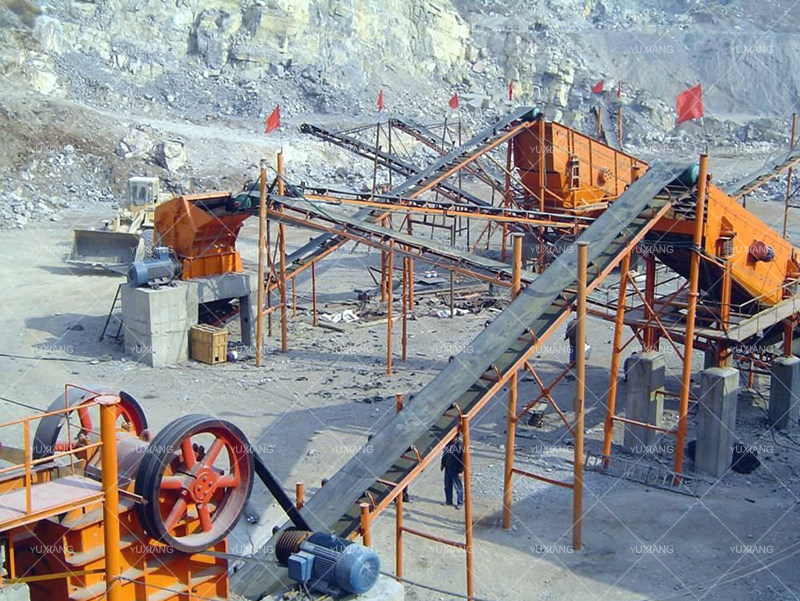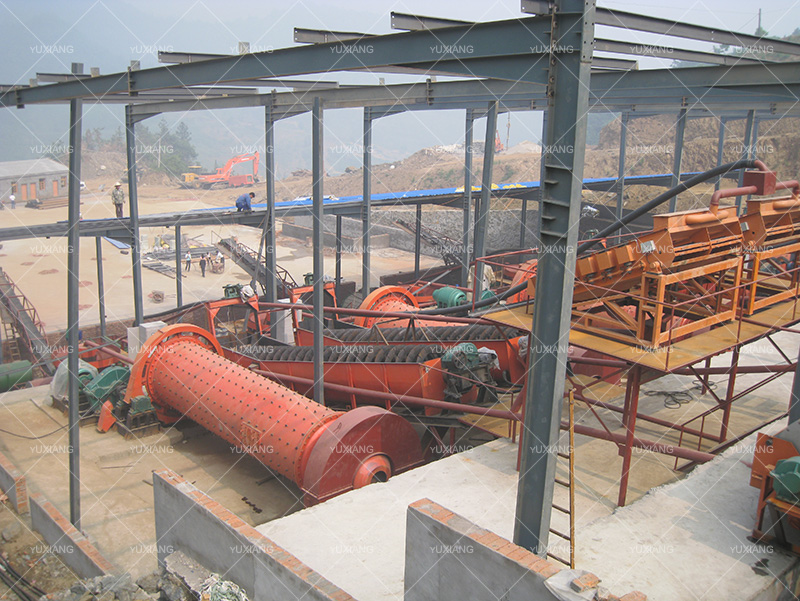Silica sand, mainly obtained from silica rock, is also called industrial sand, quartz sand or white sand:
(1) Natural silica sand: Silica sand produced from the earth’s surface in the form of natural particles, and quartzite and quartz sandstone weathered into granular placer.
(2) Artificial silica sand: crush massive quartzite, quartz sandstone, and other silica into granules, and obtain high-purity silica sand through purification.
However, natural silica contains many impurities, and silica sand needs to be purified to meet the requirements of various industrial uses. How is silica sand processed?
Yuxiang Machinery can provide solutions and equipment for silica processing plants. The production process of silica sand includes 4 stages of crushing, grinding, purifying, and drying.
1.Crushing process
(1)Primary crushing:Silica raw ore is hard and needs to be crushed by a jaw crusher to reduce its size. The crushed product is sent to the circular vibrating screen for screening. The qualified silica is sent to the next stage.(2)Secondary crushing:After the screening, the unqualified silica stone is sent to the hydraulic cone crusher by the belt conveyor for secondary crushing and screening.
Scrubbing is to remove the iron thin film and muddy impurities on the silica surface through mechanical force and friction between mineral particles. Silica rock is often scrubbed with a rod abrasive.
(1)Grinding silica stone:The crushed silica is sent to the powder silo for storage and sent to the rod mill by the ore feeder for grinding. This process can enhance the scrubbing effect and separate the silica from impurities as much as possible to achieve optional particle size.
(2)Washing silica sand:The ground silica sand is sent to the spiral classifier for classification, and at the same time, the silica sand can be washed to remove impurities and dust on the surface.
3. Silica sand purifying process
(1) Magnetic separation of silica sand: Silica sand usually contains some iron impurity minerals, such as hematite, limonite, ilmenite, pyrrhotite, tourmaline, hornblende, and so on. These iron-containing impurities may be embedded in the particles and adhere to the surface of the silica sand.
(2) Flotation of silica sand:It is difficult to separate minerals such as mica and feldspar from silica sand, and the common method is to use cationic collectors. Sulfuric acid or hydrochloric acid is commonly used to lower the pH and activate the mica and feldspar surfaces.
A cationic collector is added to the silica sand slurry, making mica and feldspar minerals hydrophobic and forming a froth layer. The froth layer is skimmed off the surface of the flotation cell. The remaining particles are mainly silicon dioxide.
4.Silica sand drying process
Dry the purified silica sand to reduce its water content to a certain level. Pack the selected silica sand for easy storage and transportation.